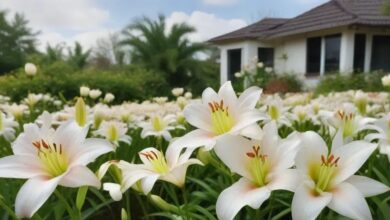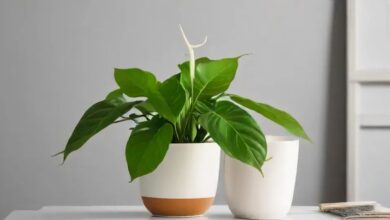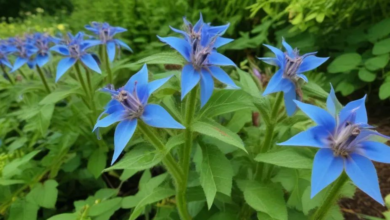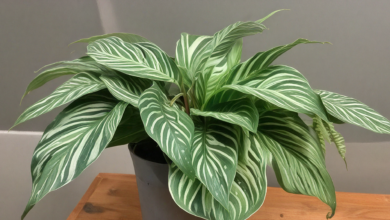How To Grow Strawberries in Containers
Let's explore the fascinating world of strawberry gardening in containers and find out how to have a bumper crop even if you have a little garden.
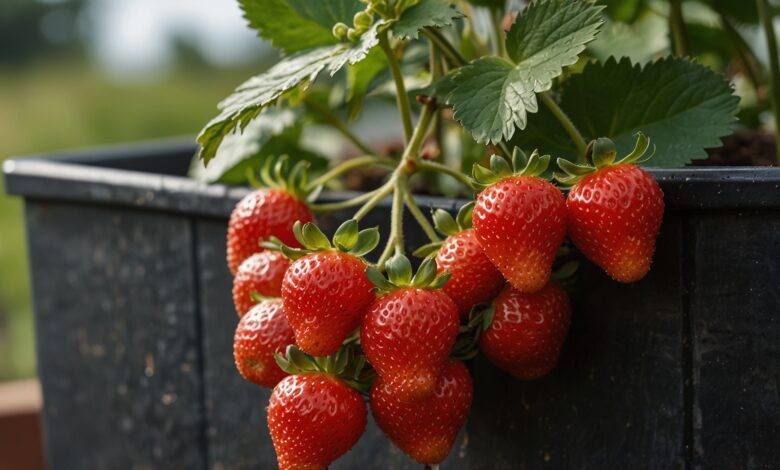
The thought of growing one’s own luscious strawberries is enticing to many people who enjoy gardening. However, what if you are short on outside area or do not possess a verdant garden? Never fear! Thanks to the wonders of container gardening, you can start a delicious strawberry orchard on your patio, balcony, or even in your home. Let’s explore the fascinating world of strawberry gardening in containers and find out how to have a bumper crop even if you have a little garden.
Why grow strawberries in containers?

First, let’s take a look at the benefits of growing strawberries in pots before we get into the specifics of container gardening:
- Space-saving: Because containers make the most of vertical space, they are perfect for balconies, patios, or even window sills that are on the smaller side.
- Portability: You may easily relocate your strawberry plants to areas with more or less shade by using containers.
- Controlling pests: If you grow strawberries in pots, you may raise them off the ground to make them less appealing to animals and insects.
- Low care: The low care requirements of container gardening, in contrast to conventional garden beds, make it a great choice for city inhabitants who are always on the go.
Steps To Grow Strawberries in Container

Choosing the Right Container
There are a few important things to keep in mind while choosing strawberry pots:
- Size: Strawberries have a very extensive root system, so choose pots that are 8–12 inches deep and 12–18 inches in diameter.
- Drainage: To avoid root rot caused by waterlogging, make sure your containers have enough drainage holes.
- Materials: Strawberries typically grow in plastic, ceramic, or terracotta pots, but you can be creative by using reused containers like hanging baskets or wooden crates.
- Quantity: Consider the number of strawberry plants you want to cultivate before deciding on a container. Three or four strawberry plants per square foot is a good rule of thumb for planting in containers.
Strawberry Variety Selection
Look for dwarf or trailing strawberry kinds that do well in small gardens when you’re planning to grow them in containers. Here are a few types that are commonly found in containers:
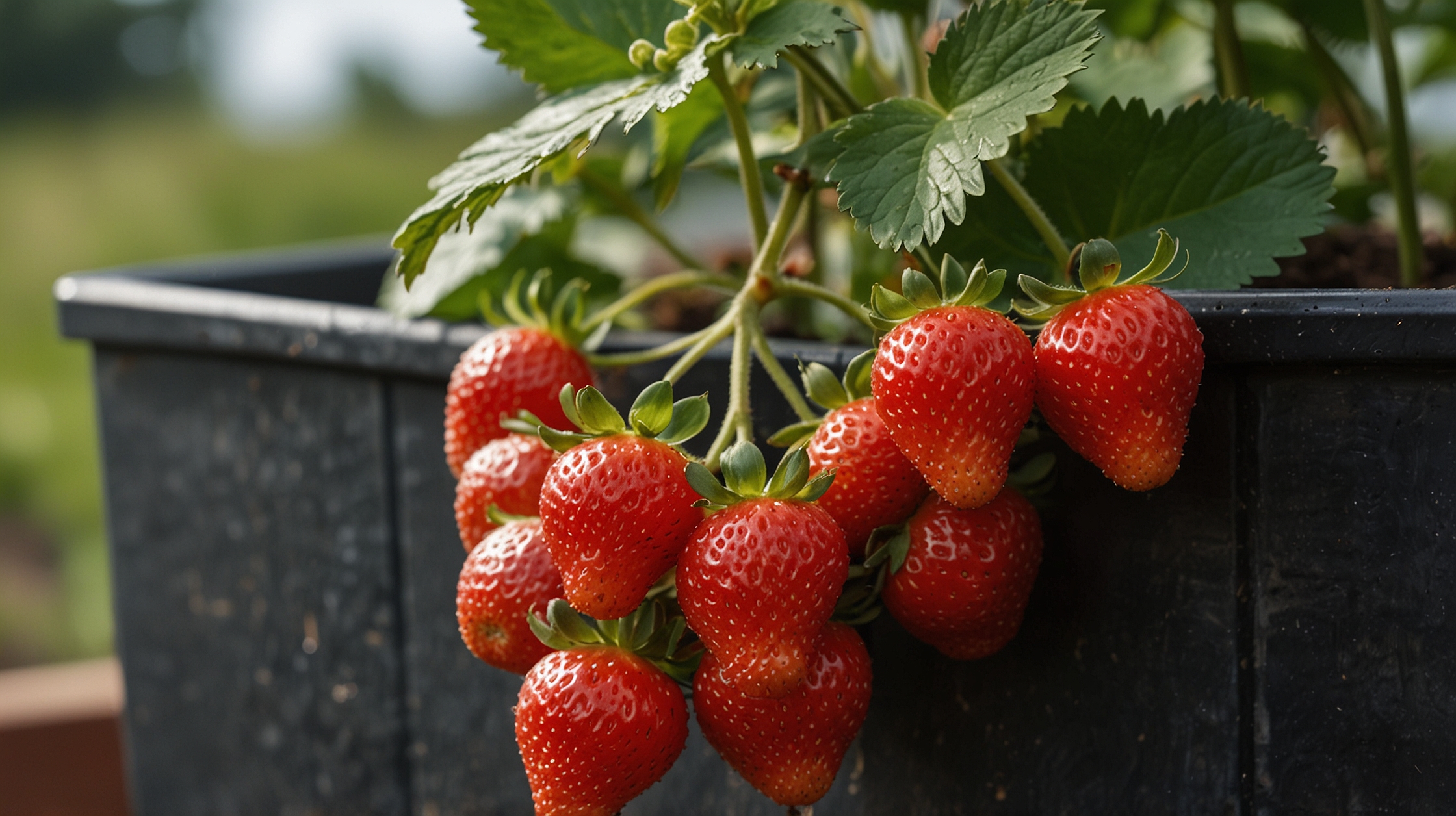
- Alpine Strawberries: Perfect for growing in containers, these little strawberries pack a big taste punch and are also highly sought-after for their aesthetic appeal.
- Everbearing Strawberries: ‘Albion’ and ‘Seascape’ are two examples of varieties that bear fruit continuously from April until October.
- Day-Neutral Strawberries: ‘Tristar’ and ‘Seascape’ are two examples of varieties that thrive in containers because they continue to bear fruit at any time of day.
Planting and Care
It is essential to start planting strawberries as soon as you have decided on your pots and kinds. In order to cultivate strawberries in pots, follow these simple steps:
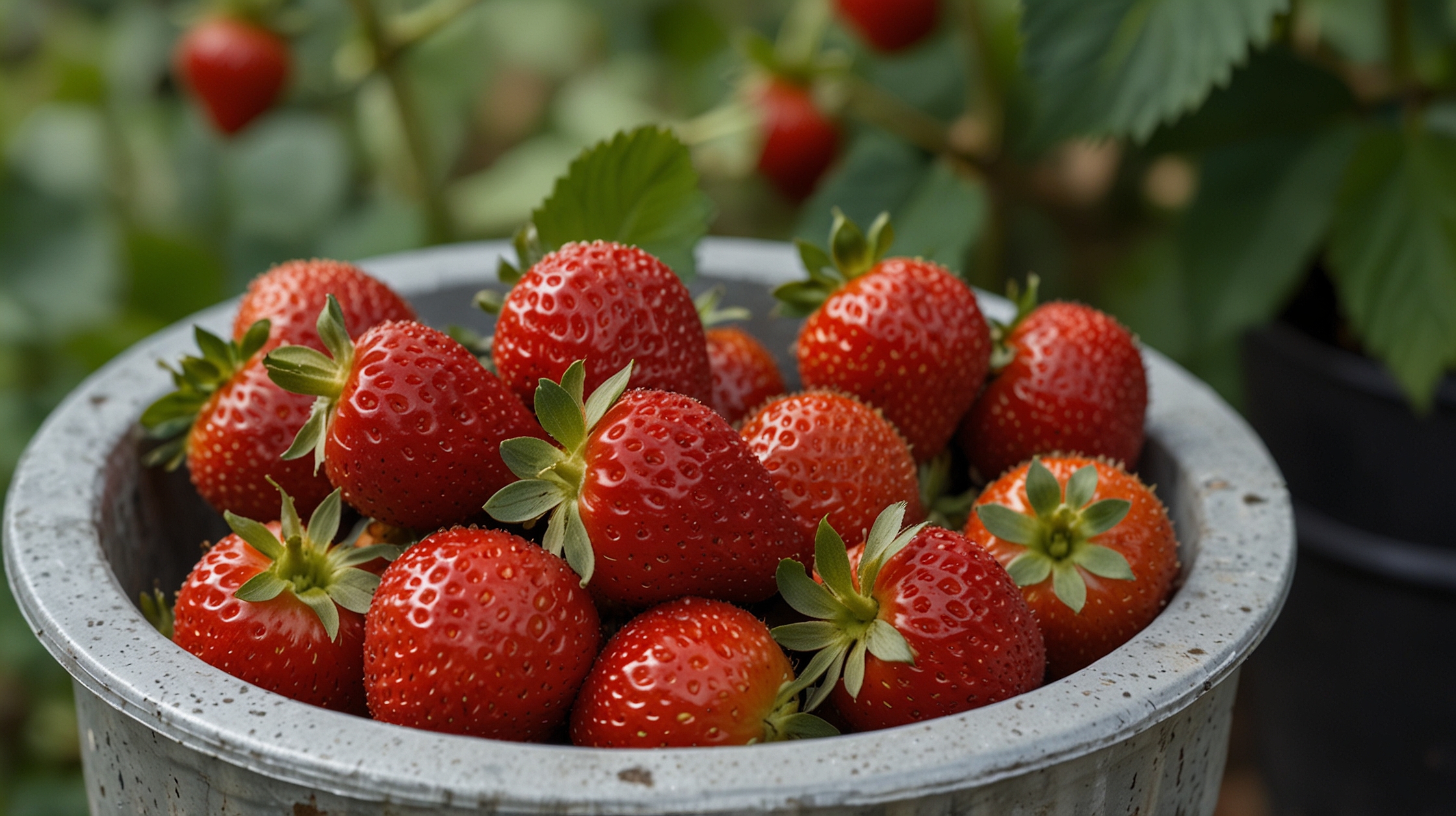
- Soli: For the soil, use a compost, perlite, and peat moss mixture or any organic-rich potting mix that drains well.
- Planting: Before you place your strawberry plants in a container, make sure the dirt is level with the top of the soil at the point where the roots and leaves meet, known as the crown. Maintain a uniform spacing of 8 to 12 inches between plants.
- Watering: When watering, make sure the soil is always damp but not soggy. In hot and dry weather, water your strawberry plants more frequently.
- Light: Make sure your strawberry plants get at least 6 to 8 hours of sunshine every day by placing their pots in a bright place.
- Fertilizing: When it comes time to fertilize, follow the directions on the packaging for either a balanced fertilizer or a strawberry-specific fertilizer. Be careful not to fertilize your plants too much, since it might cause them to produce too many leaves and not enough fruit.
- Mulching: For optimal moisture retention, weed suppression, and fruit preservation, mulch the soil around your strawberry plants with straw, pine needles, or crushed leaves.
- Disease and Pest Management: Remove common pests like slugs, snails, and aphids by keeping an eye out for them and taking the necessary steps to manage them. Powdery mildew and other fungal illnesses may be prevented with appropriate cleanliness and enough air circulation.
- Pollination: Even though strawberries naturally produce plenty of pollen, you may increase your harvest by gently shaking the blooms or using a little paintbrush to spread the pollen from one blossom to another.
Selecting the Perfect Strawberry Stars for Your Container Paradise
Container gardening requires selecting the right strawberry type. Below are key characteristics and popular container-friendly cultivars:
Everbearing vs. June-bearing:
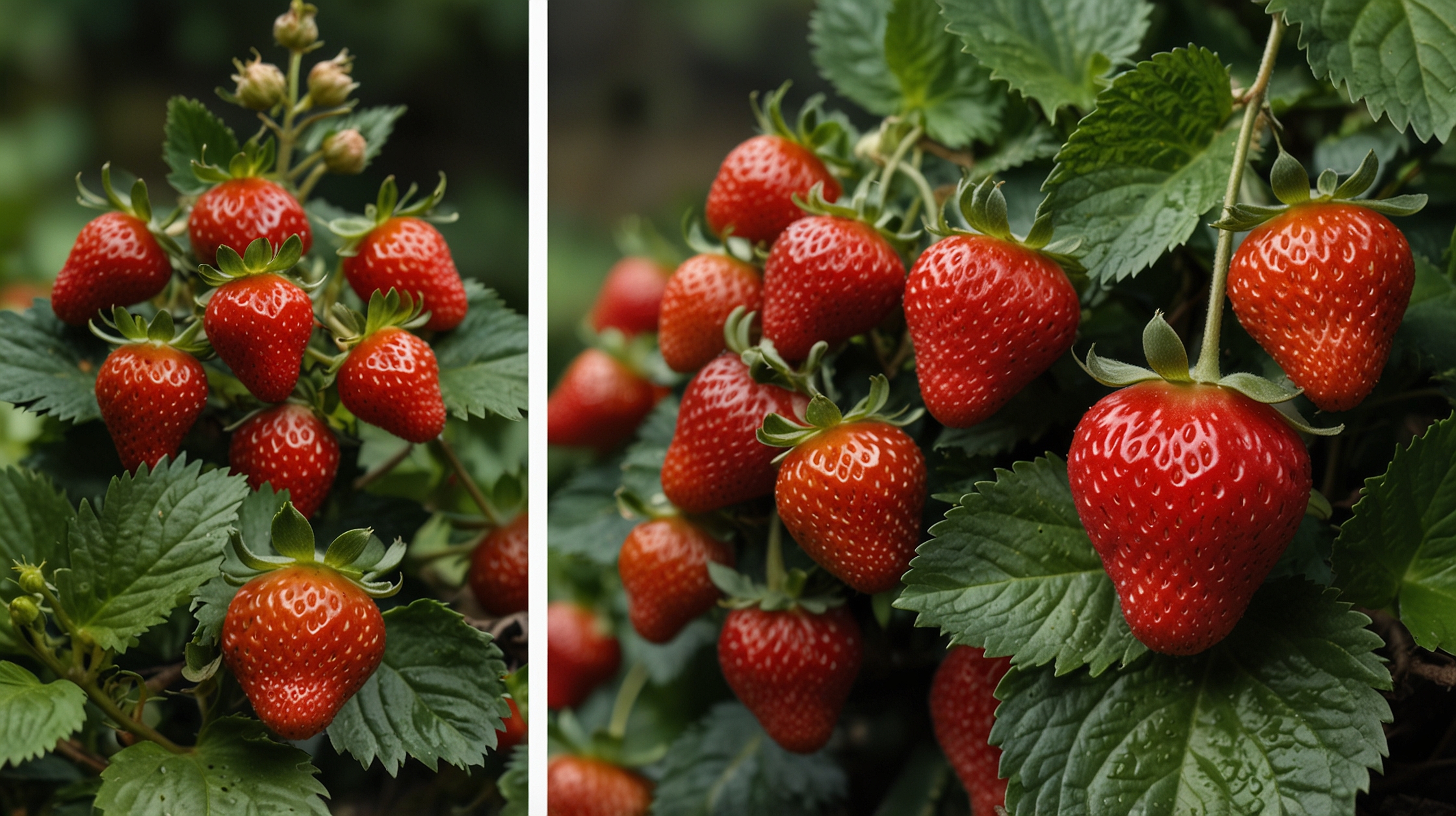
Everbearing: Everbearing strawberries produce fruit from spring until October. Although they have fewer berries than June-bearing kinds, they yield continually. Some popular everbearing containers:
Albion: This disease-resistant variety has big, delicious berries. The minimum container size is 12–15 gallons.
Tristar: Taste and disease resistance draw beginner container growers to Tristar. In 10-gallon containers, it thrives.
Alexandria: This little bearer fits 8–10 gal. It flourishes in warmer climates and produces excellent red berries.
June-bearing: June-bearing cultivars yield heavily for a few weeks in early summer. While shorter-fruiting than ever bearers, they produce larger fruits. These June containers are popular:
Fort Laramie: Huge, tasty berries from this disease-resistant variety. The minimum container is 12 gallons.
Sweet Sensation: This popular cultivar features large, red, tasty berries. Minimum 10-gallon planter.
Earliglow suits early-summer strawberry lovers. It works well in 8-gallon containers.
Resistance to illness:
Verticillium wilt and powdery mildew harm strawberries. Disease-resistant cultivars increase plant health and minimize fungicide usage.
Disease-resistant varieties include Albion, Tristar (everbearing), Fort Laramie, and Sweet Sensation.
Collecting and Savoring Your Harvest
When you give your strawberry plants the TLC they need, you’ll get a bumper crop of juicy, delicious berries. Carefully remove the ripening fruits from the plants without breaking the fragile stems. Eat them straight from the vine or use them in a variety of tasty dishes, including salads, jams, and preserves.




